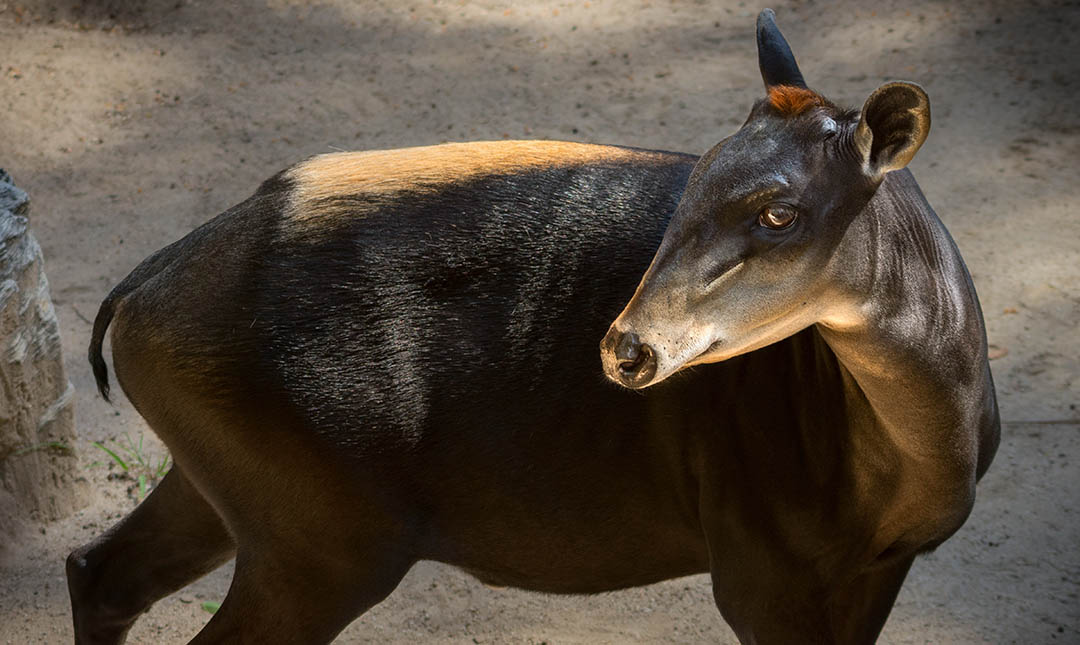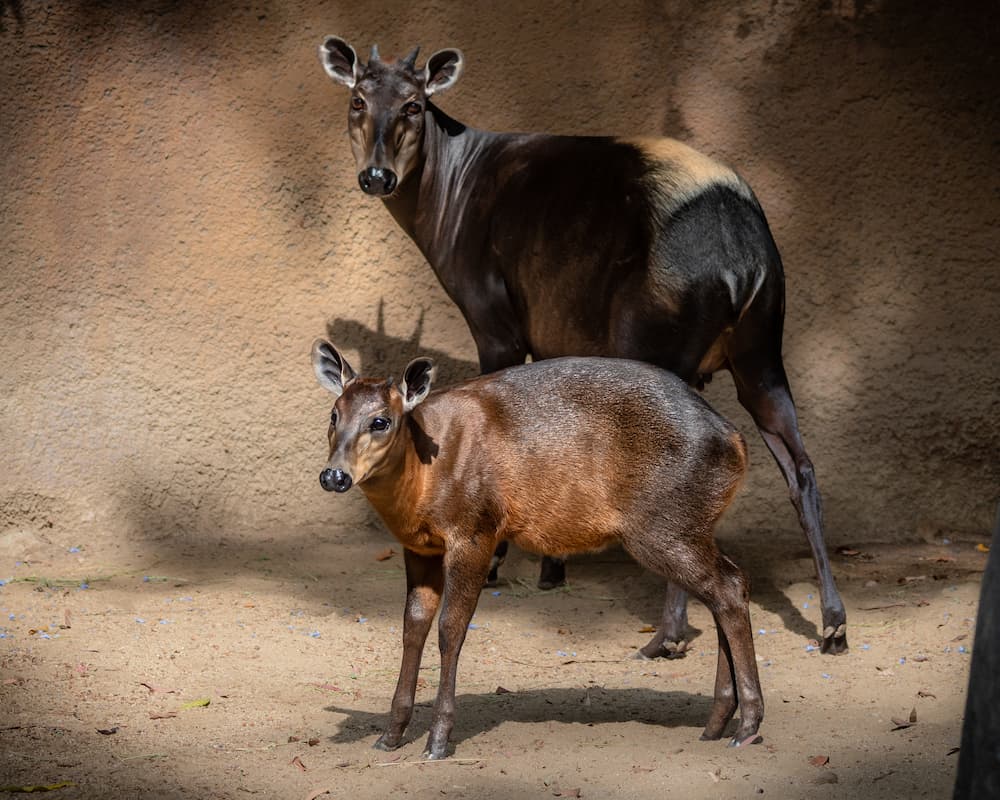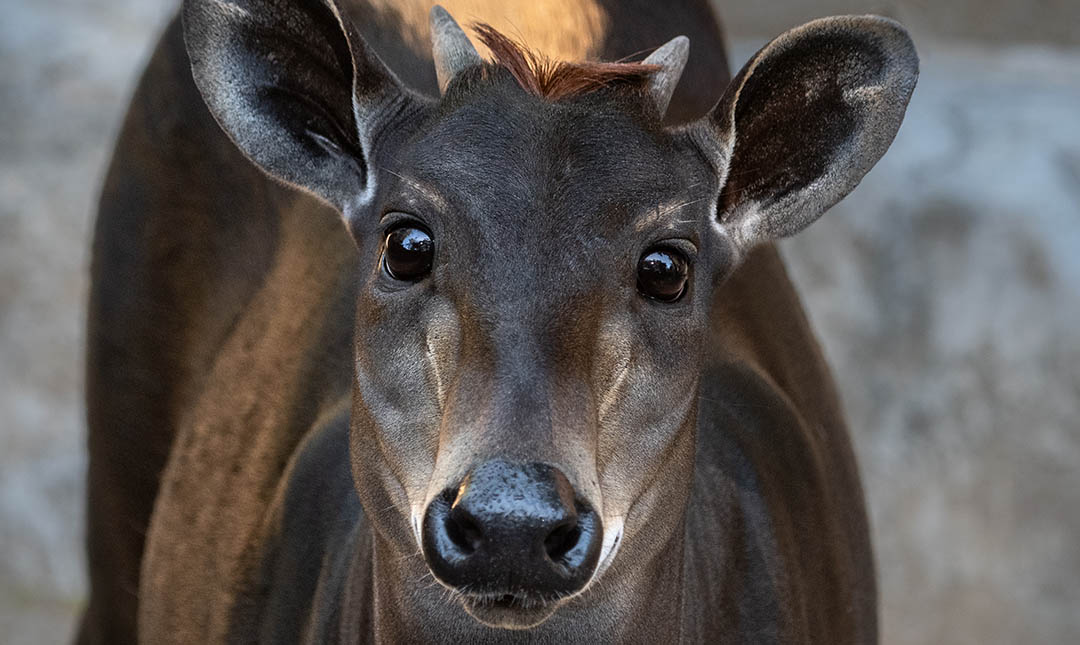About
Duikers are named for the way they quickly dive for cover when startled. The word “duiker” comes from Afrikaans and means “diver.” Adults communicate by means of shrill bleats and loud grunts. They whistle a sharp alert before fleeing quickly into the thick underbrush. They are a food source for many carnivores, including African-painted dogs, lions, leopards, pythons, civets, and crocodiles.
Because their diet consists of up to 70 percent fruit and seeds, these animals play an important role in seed dispersal, which helps forests to regenerate. They often rely on foraging monkeys, birds, and bats to drop fruit to the ground. They use their hooves and noses to dig for roots.
Large scent glands beneath the eyes are used to mark territory. Mothers use the scent glands to mark their young, and adults may scent-mark each other as a way of social bonding. Duikers are usually seen alone or in pairs. Their days are spent resting in the underbrush. Foraging begins at night. As is true with many animals, the yellow-backed duiker habitat is rapidly disappearing due to human settlement and the clearing of forests for agriculture.
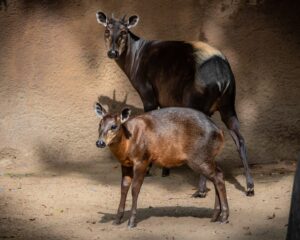
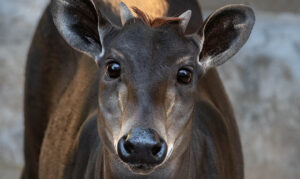

Habitat
With the widest range of any forest duiker, they inhabit dense lowland forests in central and western Africa.
Diet
These browsers eat primarily fruits, shoots, buds, seeds, and bark. They may also consume small birds, rodents, insects, and carrion.
Physical Characteristics
The yellow-backed duiker is the largest of all duikers with a triangular yellow patch on its rump. It has a heavy-set body, slender legs, and a red tuft of hair on the top of its head between its short horns. Height is about 2.5 feet at the shoulder, and body length is four feet. Weight is between 99 and 176 pounds. Lifespan is 10 to 14 years.
LOCATION WITHIN THE ZOO
You’ll find this animal on the hillside in the Africa section. See Zoo Map.

